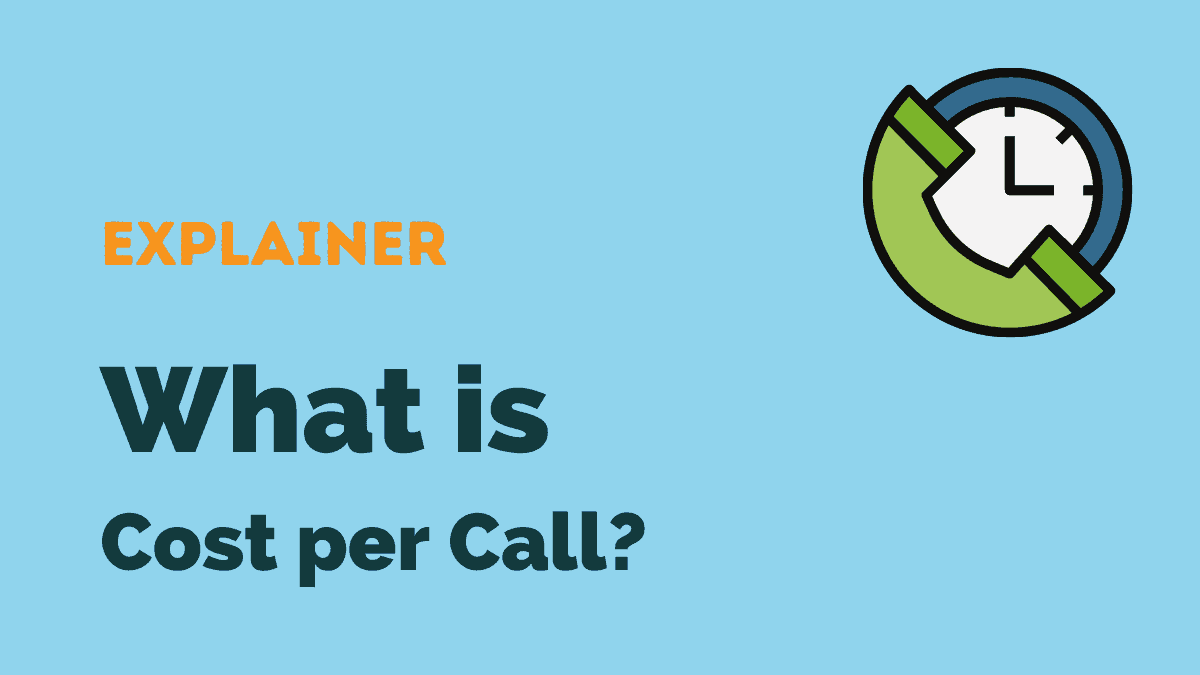In this post:
- What is cost per call?
- How to calculate Cost per call
- What does cost per call tell you?
- 4 ways to cut your cost per call
What is Cost per Call?
Cost per call is broadly defined as the total contact center operational budget divided over its number of calls. It’s a KPI that allows you to see how effectively your budget is being spent.
By keeping an eye on this metric, you can learn a lot about the organizational health of your business.
Cost per call shouldn’t be confused with cost per contact; that’s a related metric which looks at your fully loaded costs across every contact channel.
Contact centers tend to be especially interested in the cost of calls because calls are consistently the most expensive form of customer service.
How to calculate cost per call
Before you can calculate cost per call, you need to collect some data on your operational expenses.
A range of elements can contribute to cost per call, including some of the following:
- Employee wages
- Energy costs
- Rent
- Building maintenance
- Software licensing
- HR and recruitment
You’ll need to factor in basic every item in your operational budget when calculating cost per call.
Then you’ll then need to define the period for which you are making the calculation. For example, this could be per day or per month.
Once you’ve gathered this data, you need to check it against the volume of calls handled during this interval.
Finally, divide the total operational costs by the number of calls. This gives you an estimate of your cost per call.
If your contact center operates a number of different contact channels, calculating cost per call (or contact) becomes a bit more complex.
That being said, monitoring this metric as accurately as possible is invaluable and will allow you to run your business more efficiently.
What does cost per call tell you?
Cost per call can give you a clear indication of the total cost of providing customer service over the phone.
It’s not a perfect measurement, but it does provide some vital insight. If your cost per call is high, that may point to inefficiencies in your customer service operation.
You will be alerted to sudden spikes or gradual increases, which allows you to address any issues as required.
However, cheaper isn’t always better. Customer satisfaction should always be considered in your efforts to lower cost per call.
4 ways to improve cost per call
There are many different ways to improve your call center’s cost per call. Here are four of the most effective methods.
1) Use integrated call center software. When you integrate your business processes, it allows you to solve problems more efficiently. A solution like babelforce’s No-Code toolkit allows you to integrate the software your agents use and automate any processes you see fit, without the need to hire developers.
2) Monitor schedule adherence. Call center schedule adherence is a measurement of how well your employees stick to their schedules. If you can keep your employees on track, then you can reduce overall call costs.
3) Provide self-service options. Many contact centers get bogged down in routine and repetitive calls. If you enable your customers to help themselves with self-service, you’ll free up valuable time for your agents to focus on more relevant calls.
4) Optimize first contact resolution. This means that your agents are solving problems quickly, reducing the need for follow-up calls. Improving your first contact resolution brings down overall call volume while improving customer satisfaction. You can do this by automating core processes with the right customer support software and offering additional training and refresher courses for your agents.
Track cost per call to boost operational efficiency
Tracking cost per call is a great way to identify any potential inefficiencies in your contact center.
From there, you can implement appropriate measures to improve your cost per call and the overall health of your business.
Just remember to keep customer satisfaction front of mind in your endeavors to reduce costs.





